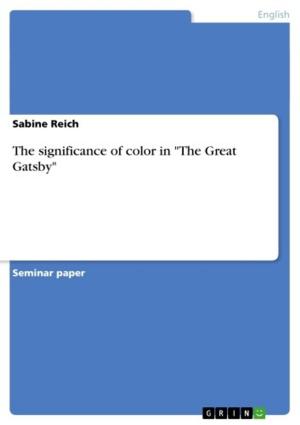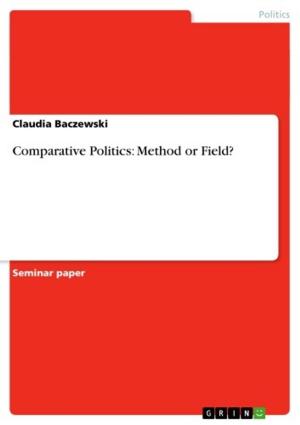| Author: | Isabel Dionisio | ISBN: | 9783638377164 |
| Publisher: | GRIN Publishing | Publication: | May 12, 2005 |
| Imprint: | GRIN Publishing | Language: | English |
| Author: | Isabel Dionisio |
| ISBN: | 9783638377164 |
| Publisher: | GRIN Publishing |
| Publication: | May 12, 2005 |
| Imprint: | GRIN Publishing |
| Language: | English |
Seminar paper from the year 2004 in the subject English Language and Literature Studies - Literature, grade: 2+, University of Wuppertal, 3 entries in the bibliography, language: English, abstract: 'Salome' is a poem written by Carol Ann Duffy and can be found in the compilation of The World's Wife written in 1999. It is a thematic book, where each poem is the voice of an hypothetical wife of a great man of history or mythology. The poem Salome consists of four stanzas. The first stanza has 14 lines; the second and third stanza have nine lines, and the last one has four lines. The register of the poem is intimate and addressed to a large number of readers. In terms of style, we will find in this poem black humour especially because of the smash of rhymes, as for instant: 'lighter, laughter, flatter, pewter, Peter.' The poems' persona is called Salome who we find immediately in the title. A hasty and knowledgeable reader will easily connect the character of this poem with a historical and biblical woman named Salome. The myth of a dancer (Salome) has been told in various different ways. It (the poem) became known in different adaptations as in literature, television, cinema and theatre. The history of the biblical Salome is very well known among the religious, but it seems to me important to refer briefly about it on the next page. In the following paper I will first of all, talk about the author Carol Ann Duffy as a person and a writer, because the education that she received could be an interesting clue to her poem 'Salome'. Then, I will proceed with an interpretation or analysis of this poem Salome in a historical way, but also in a modern way. I mean, I will always connect this poem with the real, biblical, story. That is because, in my opinion, the persona can simultaneously be a modern fictional woman from nowadays, or the historical (but also fictional) woman. In other words, in my point of view, the poem relies on double meanings, therefore two different interpretations.
Seminar paper from the year 2004 in the subject English Language and Literature Studies - Literature, grade: 2+, University of Wuppertal, 3 entries in the bibliography, language: English, abstract: 'Salome' is a poem written by Carol Ann Duffy and can be found in the compilation of The World's Wife written in 1999. It is a thematic book, where each poem is the voice of an hypothetical wife of a great man of history or mythology. The poem Salome consists of four stanzas. The first stanza has 14 lines; the second and third stanza have nine lines, and the last one has four lines. The register of the poem is intimate and addressed to a large number of readers. In terms of style, we will find in this poem black humour especially because of the smash of rhymes, as for instant: 'lighter, laughter, flatter, pewter, Peter.' The poems' persona is called Salome who we find immediately in the title. A hasty and knowledgeable reader will easily connect the character of this poem with a historical and biblical woman named Salome. The myth of a dancer (Salome) has been told in various different ways. It (the poem) became known in different adaptations as in literature, television, cinema and theatre. The history of the biblical Salome is very well known among the religious, but it seems to me important to refer briefly about it on the next page. In the following paper I will first of all, talk about the author Carol Ann Duffy as a person and a writer, because the education that she received could be an interesting clue to her poem 'Salome'. Then, I will proceed with an interpretation or analysis of this poem Salome in a historical way, but also in a modern way. I mean, I will always connect this poem with the real, biblical, story. That is because, in my opinion, the persona can simultaneously be a modern fictional woman from nowadays, or the historical (but also fictional) woman. In other words, in my point of view, the poem relies on double meanings, therefore two different interpretations.















